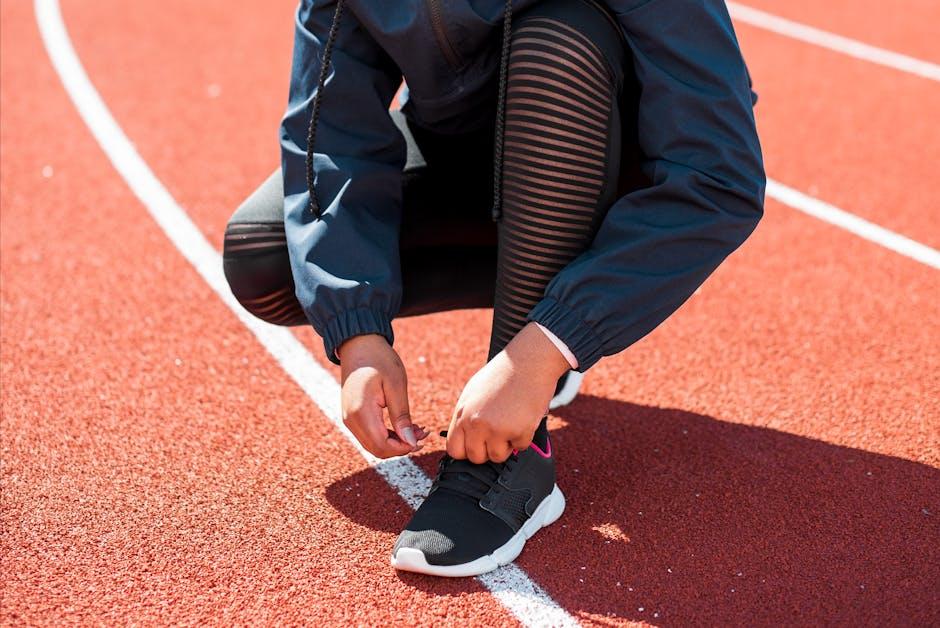In the world of running, where each footfall echoes the rhythm of determination and dreams, the quest for better performance often leads us to explore the intricacies of form. Just as a painter refines their brushstroke or a musician perfects their melody, a runner must hone their technique to transform potential into prowess. Whether you’re a seasoned marathoner chasing a personal best or a beginner eager to embrace the runner’s high, understanding and improving your running form can be the key to unlocking new levels of speed, efficiency, and endurance. In this article, we delve into the art and science of running form, offering insights and tips to help you glide across the pavement with the grace of a gazelle and the power of a cheetah. Join us as we embark on this journey to elevate your running experience, stride by stride.
Mastering Your Posture and Alignment
Achieving optimal running form requires a harmonious balance of posture and alignment. Begin by focusing on your head position; keep your gaze forward, not down, to maintain a neutral neck alignment. This small adjustment helps in reducing tension and promotes a more streamlined body movement. Consider your shoulders next; they should remain relaxed and low, avoiding any hunching that can lead to upper body strain. Let your arms swing naturally at your sides, with elbows bent at a 90-degree angle.
- Engage your core to stabilize your pelvis and lower back, supporting a more efficient stride.
- Lean slightly forward from your ankles, not your waist, to leverage gravity and propel yourself forward.
- Align your hips under your torso to prevent overstriding and minimize impact on your joints.
By consciously adjusting these elements, you can enhance your running efficiency and reduce the risk of injury, paving the way for a more enjoyable and effective running experience.

Optimizing Footstrike for Efficiency
Enhancing your footstrike is a subtle yet powerful way to boost your running efficiency. The position and manner in which your foot meets the ground can significantly influence your performance. Consider the following techniques to refine your footstrike:
- Midfoot Strike: Aim for a midfoot strike where the ball of your foot and heel touch the ground almost simultaneously. This helps distribute impact forces evenly and reduces stress on your joints.
- Cadence Improvement: Increasing your stride rate to around 170-180 steps per minute can encourage a more natural midfoot landing. This helps minimize overstriding, which often leads to a heavy heel strike.
- Posture and Alignment: Maintain a slight forward lean from your ankles, not your waist. This natural alignment encourages a footstrike closer to your center of gravity, promoting efficiency and reducing injury risk.
Experimenting with these adjustments may take time, but the payoff in enhanced running efficiency and performance is worth the effort. Incorporate these changes gradually into your routine to ensure a smooth transition and allow your body to adapt.

Enhancing Stride Length and Cadence
Improving your running form involves a delicate balance between stride length and cadence. Stride length refers to the distance covered in one step, while cadence is the number of steps taken per minute. To optimize your performance, consider focusing on these key areas:
- Strength Training: Incorporate exercises that target your core, glutes, and hamstrings to enhance power and stability.
- Flexibility and Mobility: Regular stretching and mobility exercises can increase your range of motion, enabling a more efficient stride.
- Cadence Adjustment: Aim for a cadence of 170-180 steps per minute, which can help reduce the risk of injury and improve efficiency.
Remember, the goal is to find a harmonious rhythm that suits your natural running style while minimizing effort and maximizing speed. Experiment with different techniques, track your progress, and adjust as needed to discover what works best for you.

Strengthening Core and Supporting Muscles
Enhancing your running form isn’t just about moving your legs faster; it’s about building a strong foundation. To achieve this, focus on fortifying your core and the supporting muscles that stabilize your body. A robust core can significantly improve your posture, reduce the risk of injury, and enhance your overall running efficiency. Here are some key areas to concentrate on:
- Core Stability: Incorporate exercises like planks, Russian twists, and bicycle crunches into your routine. These exercises target the abdominal muscles, obliques, and lower back, crucial for maintaining balance and control.
- Hip Flexors: Strengthening the hip flexors through lunges and leg raises can help increase your stride length and prevent common injuries.
- Glutes and Hamstrings: Engage in squats, deadlifts, and bridges to power up these muscles. Strong glutes and hamstrings contribute to a more powerful push-off phase in your running cycle.
By dedicating time to these areas, you not only improve your running form but also unlock a new level of performance and endurance.
